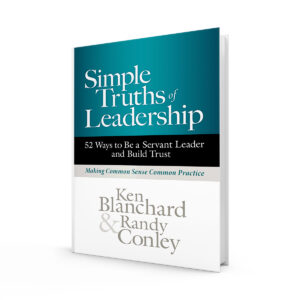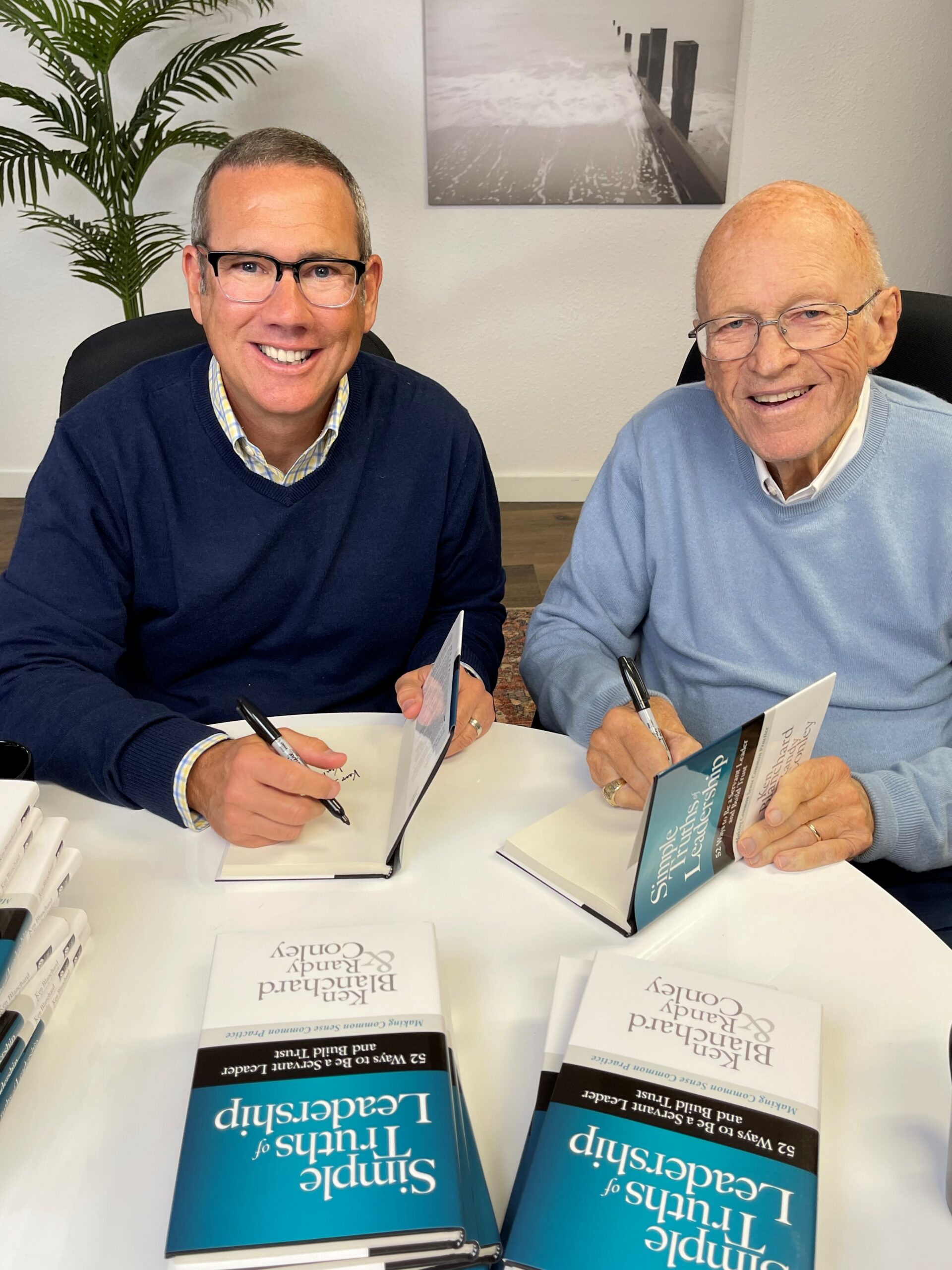Commonsense Leadership
Leadership doesn’t have to be complicated. The simplest leadership principles—trusting your people, helping them win, praising progress—are at the root of some of the most successful organizations in the world.
Why, then, is commonsense leadership so seldom used in common practice? Perhaps if more of today’s leaders used common sense, 65 to 70 percent of the workforce wouldn’t be considered disengaged. Ken Blanchard and Randy Conley have released a book, Simple Truths of Leadership 52 Ways to Be a Servant Leader and Build Trust, and I spoke to them about their work.
What are some of the benefits of servant leadership? What’s so different about this style of leadership?
Servant leadership produces a happier, more secure, more empowered workforce and a more successful company. Servant leaders work alongside their people, setting goals, praising them when they are doing things right, and redirecting them when they are going off track. They help their team members win by flexing their leadership style to match each person’s development level on whatever task or goal they are working on. Servant leadership is the best way to achieve both great relationships and great results.
What are some of the characteristics of a servant leader?
Effective servant leaders are humble. They are willing to admit they don’t know everything. When things go well, they give credit to their team members, and when things go poorly, they take responsibility. Servant leaders share information with their people, solicit their ideas, and let them know their contributions are appreciated. They create a culture of empowerment where team members feel safe to make suggestions and make mistakes. Servant leaders partner for performance, walk their talk, and lead with love.
How do organizations best create a servant leadership culture?
Transitioning from a command-and-control environment to one where managers and direct reports work side by side on goal achievement is not a quick or easy process. Some leaders are wary of the word servant. They think servant leadership means relinquishing control to their direct reports who will then be able to call all the shots, damaging the company’s bottom line. In fact, organizations run by servant leaders almost always outperform their hierarchical competitors. To create a true servant leadership culture, the two aspects of servant leadership—vision (strategic) and direction (operational)—must be in place. Everyone in executive leadership roles must be ready for the transition and committed to the concepts of servant leadership.
How do leaders build trust?
Building trust requires a comprehensive and sustained approach over time. Servant leadership is key for leaders who want to build trust with their team members, because servant leaders behave in ways that inspire trust. They extend trust and put their people’s needs ahead of their own. And when people believe their leader has their best interests at heart and is there to support them in achieving their goals, trust in their leader grows. When people behave in trustworthy ways, they build trust.
If you are working with an organization, how do you assess whether the culture is one of trust or distrust?
In Simple Truth #28, we discuss what we call the ABCDs of Building Trust. When you want to get an idea about whether a culture is trustworthy, ask these questions. Your answers will tell you what you want to know.
- Are they Able? Do they demonstrate competence?
- Are people good at what they do? Do they get results?
- Are they Believable? Do they act with integrity?
- Is there an air of sincerity and respect, or of secrecy, gossip, and judgment?
- Are they Connected? Do they care about people?
- Do leaders listen, praise, and show interest in others? Do they ask for input?
- Are they Dependable? Do they honor commitments?
- Do leaders do what they say they will do? Are they accountable? Consistent?

For more information, see Simple Truths of Leadership 52 Ways to Be a Servant Leader and Build Trust.
Image Credit: Greg Rosenke

